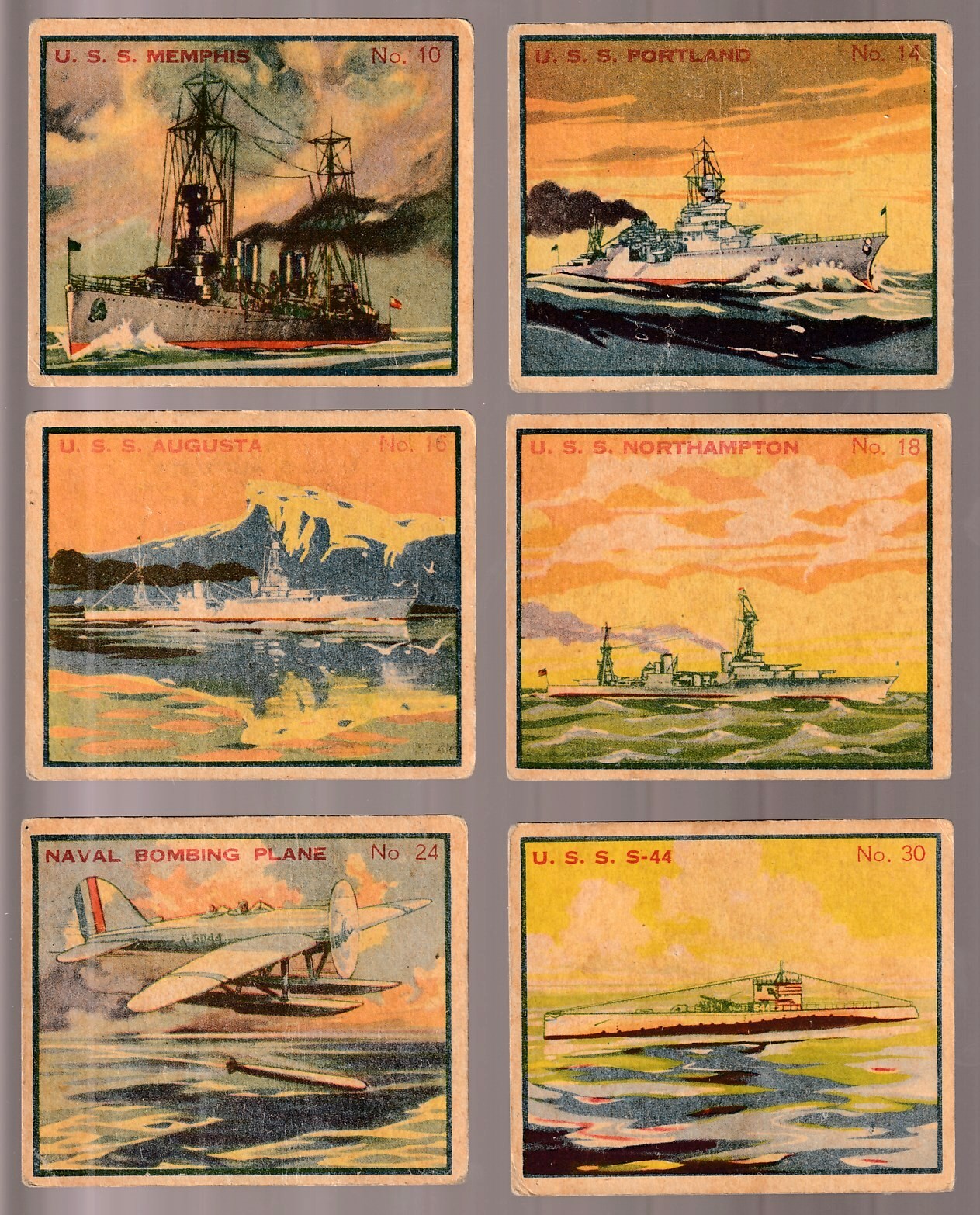| FREE |  |
(10) NM/MINT Vintage Hall-of-Famers click for details |
 |
FREE |
| FREE |  |
(10) NM/MINT Vintage Hall-of-Famers click for details |
 |
FREE |
| USE BACK ARROW TO RETURN TO PRIOR PAGE |
1936 Battleship Gum #18 U.S.S. NorthamptonBook = $ *BOOK* Price = $ 23.95 VG-VG/EX |

|
|
Below are short bits & pieces on sportscard & baseball trading card collecting. Please wander around the website for more info, prices, values & images on vintage baseball, football, basketball, hockey, sport and non-sports cards. 



Baseball card collecting terms (part S-Z)
Series are groups of cards in an issue released together. Example: Series #1 (cards #1-100) are released in April; Series #2 (#101-200) released in July; and so on. This allowed kids to easier complete sets. A side-effect was the creation of scarce "High Numbers". Short Print (SP) is a card printed in lesser quantity than other cards in the set. Recent short prints are often serially-numbered. Team Set is a group of all the cards of players for a certain team. Test Issue is a small printing by a card company to see if products are of interest to collectors. Some of Topps neatest items are "Test Issues" like 1956 Topps Pins & 1974 Topps Puzzles. Tobacco Card is typically from the early 1900's and were issued with tobacco products, the most famous of which is the T-206 Honus Wagner card. Traded/Update Set is a set issued after the original issue primarily featuring rookies or players who were traded since the original issue came out. Trimmed Card is a card reduced in size mostly to hide damaged edges or corners. Trimmed cards have very little value compared to the un-trimmed version. In some cases such as the 1952 Topps Mickey Mantle, even trimmed cards can go for thousands. The most famous 'trimmed' card is the T206 Honus Wagner purchased by Wayne Gretzky. The card was actually too large before it was trimmed down to size. Unauthorized Issue is a card release which is not licensed by the league, player's association or player. Variation is a card printed by the manufacturer that differs in some way from the normal card. Wax Pack is a generic term for a pack of cards. The "wax" came from a time when packs were sealed in wax paper wrappers. Today it is still used for packs even though they no longer use wax paper. © 1995-2019 "InterNet's Baseball Card Store" / Joseph Juhasz ... All Rights Reserved |